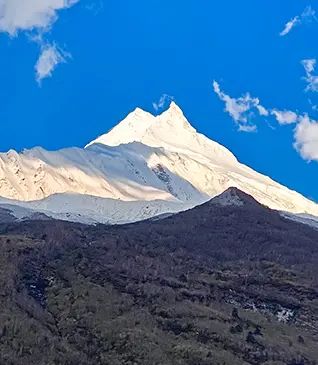Amazing mountain peaks, vivacious alpine flora, infinitely spread meadows, and adrenaline adventures. Being in high altitudes is an unbelievable escapade. However, good things never come easy. A lot more than money and endurance goes to attain these treasures. One should unlearn what he/she has learned at home to have an effortless jaunt to the Himalayas.
There are many conversations about how to prevent AMS. Very rarely do we hear about correct walking in the mountains for acclimatization. The pace of rising up has a drastic effect on your health. The correct speed of hiking or climbing will enhance the process of acclimatization. Hence, knowing the techniques of walking is really important to be a proficient trekker. Here are some of those :
1. Take it slow
You may be an ultra-runner, but take it really slow when you climb in the Himalayas. Take one step at a time and do not run on the trail. This will lead to heavy breathing which will make you feel fatigued due to low respiration rate in the mountains. Being synchronized with the breathing rate is significant. The most efficient way to do this, take one step forward when you inhale and another step when you exhale. If there is a steep slope, climb one step up breathe 2-3 times then take another step. Let the walking be as slow as your breathing movement. Practice this at sea level so that breathing pace becomes your default walking speed. Your inspiration rate must be your inspiration to keep going!
CUE: Take one step forward when you inhale and another step when you exhale.
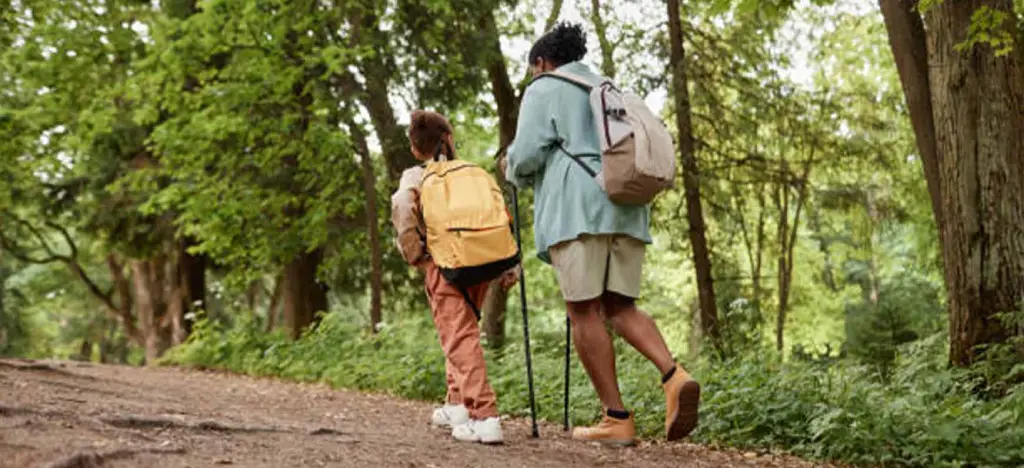
2. Never walk upright
Walking upright is a curse in high altitudes. A correct spine frame plays a vital role in reducing body strain. Prior to this, it is essential to load the backpacks in the right way. Once the luggage on the back is placed correctly, remember to walk correctly. Fasten the backpack straps and let the load be close to the body. Look down and bend from the hip such that maximum load comes on the back and shoulder. This lowers weight on the lower back and reduces the chances of falling. This can be learned by observing the porters or local guides who carry 30-40 kg. You can evidently notice how efficiently and fast they climb up by bending the back. Walk upright only on a flat terrain if you feel really uncomfortable or want to rest. Also, avoid pulling the loose hanging strings of the load.
CUE: Look down and bend from the hip. Tighten loose straps, and keep the backpack closer to the body.
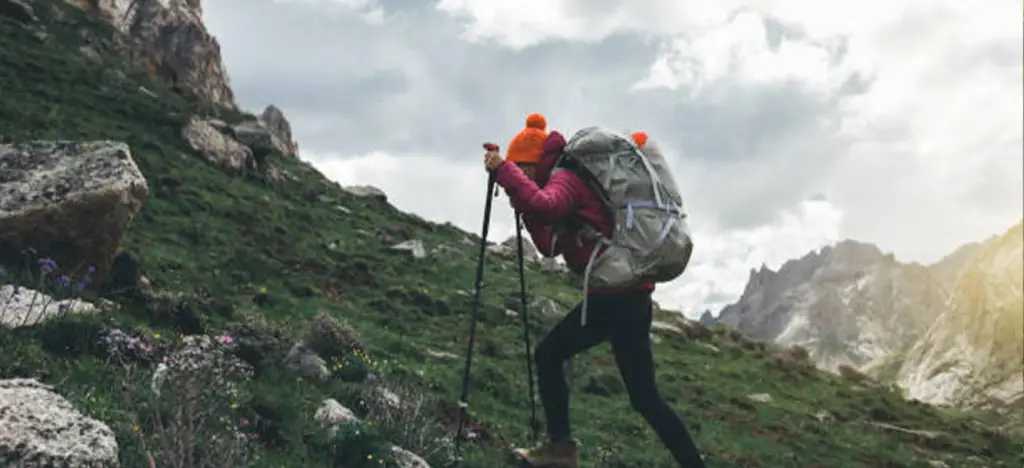 3. Less sweat, more gain
3. Less sweat, more gain
Another important reason to walk steadily and slowly is to avoid sweating. Sweating is the process of cooling down the body when working out. On the contrary, it is necessary to keep the body warm at high altitudes. Also, with layers of clothing, the sweat won't dry immediately, and the wetness may slowly lead to heat loss. Thus, less sweat, more gain. Never speed up or exert. Try to maintain a uniform hiking pace.
Many times you must have noticed that wearing a jacket and a backpack on it causes heavy sweating on the back and shoulder (area below straps). When the wind blows you suddenly feel cold in these regions. Of course, you cannot remove the jacket pertaining to the low temperatures outside. A hack to avoid this can be to wear the jacket from the front side such that the zip or opening goes behind the back. Now you can keep the jacket unzipped and let it fall loosely on the back. Wear a backpack without covering your back with the jacket. The backpack will lie immediately on the shirt and not on the jacket. This will prevent the cold from frontside, also avoiding perspiration on the back.
CUE: Maintain uniform pace. Wear a jacket from the front side such that the zip or opening goes behind the back
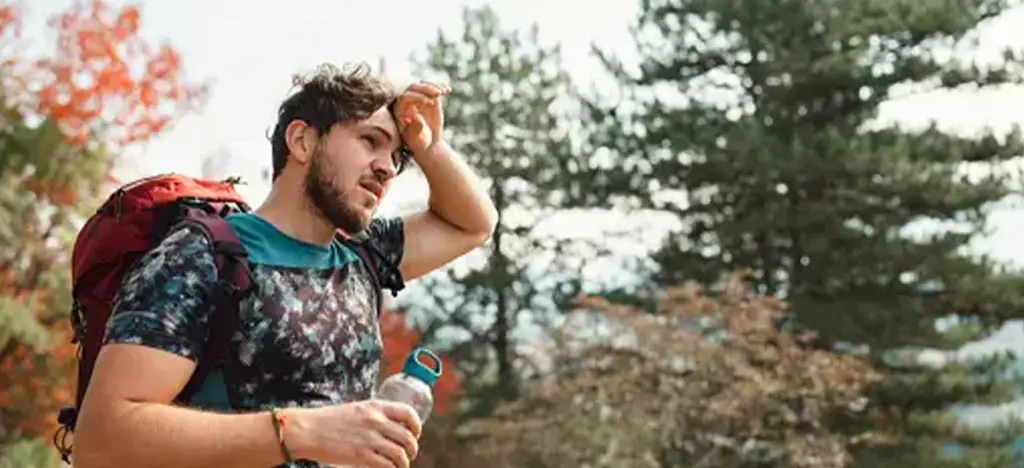
4. Climb down smartly
We have seen trekkers running downhill trails or jumping from small boulders and falling down due to imbalance. If climbing up is strategic, so does climbing down. Always lower down the slope in a zig-zag fashion with really small steps. This will help the body to maintain balance. Most importantly it helps smooth landing on the ground. With this technique, you can also speed a bit and come down fast. Avoid jumping from boulders or rocks. This will only strain your foot soles and knees. Always remember trekking down will put pressure on your knees. So, bend your knees on the slopes while climbing down. This will create suspension and prevent direct force on your knees. You should master the method to save your knees.
CUE: Climb down the slope in the zig-zag path with small steps and keeping knees bent. Do not jump from boulders.
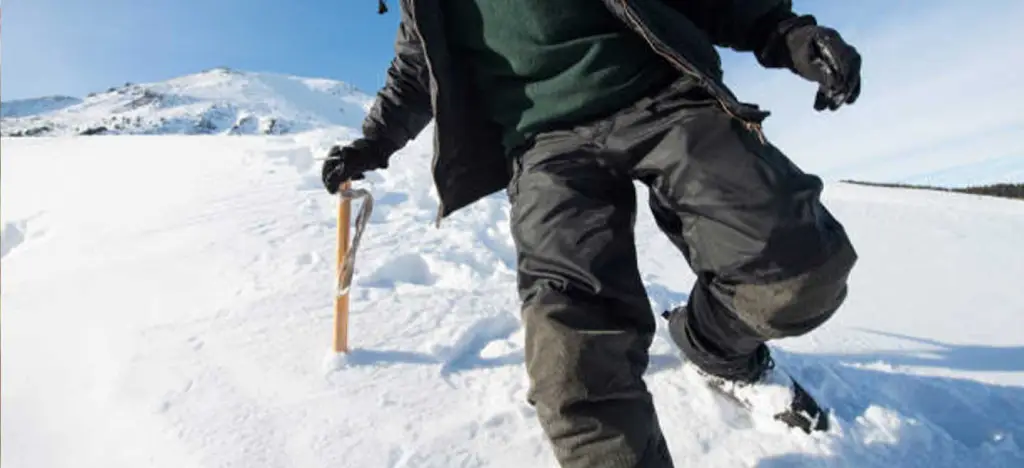
5. Use a trekking pole as a booster
Apart from the above hacks and tips, trekking pole also boosts easy walking. Instead of using it as a showpiece when used efficiently, it will help reduce the stress on your body vastly. Hold the handle of the pole with your palm upwards and encircling the fingers from downwards. Put all the body weight on the pole by pressing your palm on the grip of the handle. Secure the pointed end of the pole on a solid surface on the ground. Pole can prove extremely useful while climbing down. If used efficiently, it will reduce the overall load on your knees.
Be careful while placing it on rocks or slippery trails. Always keep the trekking pole on the hand towards the slope and opposite to the exposed side of the slope. The chances of slipping the pole down the slope are less if the pole falls from your hand. Another reason is the narrow paths on ridges or valleys. If by chance you place the trekking pole outside the path, lower on the slope, you might fall down due to imbalance.
CUE: Put all the body weight on the pole by pressing your palm. Do not hold the trekking pole in the hand towards the valley/exposed end of the path.
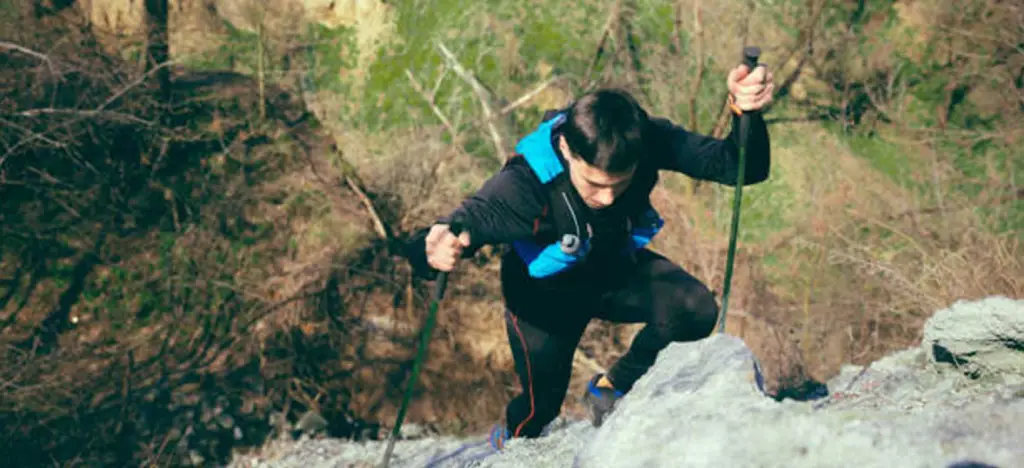
6. Another booster is Backpack
The correct way to place a backpack on the back and shoulders is to evenly distribute the load, enabling you to walk easily. Yes, it is good to keep the bag closer to the body by fastening the straps. Most of the trekkers secure very tightly the loose straps of shoulders and hip. After a while, the tight straps begin to hurt. Of course, then the trekkers remove the backpack frequently. Re-adjust and walk again. This breaks the walking wavelength. A hack to avoid this is to tighten the shoulder straps first, keeping the hip straps a little loose. After some time, loosen the shoulder straps and fasten the hip straps. Before the tight ends cause discomfort, remove them and tighten other straps. This also evenly puts stress on the shoulder and hips, turn by turn, without even getting off the backpack.
CUE: Tighten the shoulder straps first, keeping the hip straps a little loose. After some time, loosen the shoulder straps and fasten the hip straps.
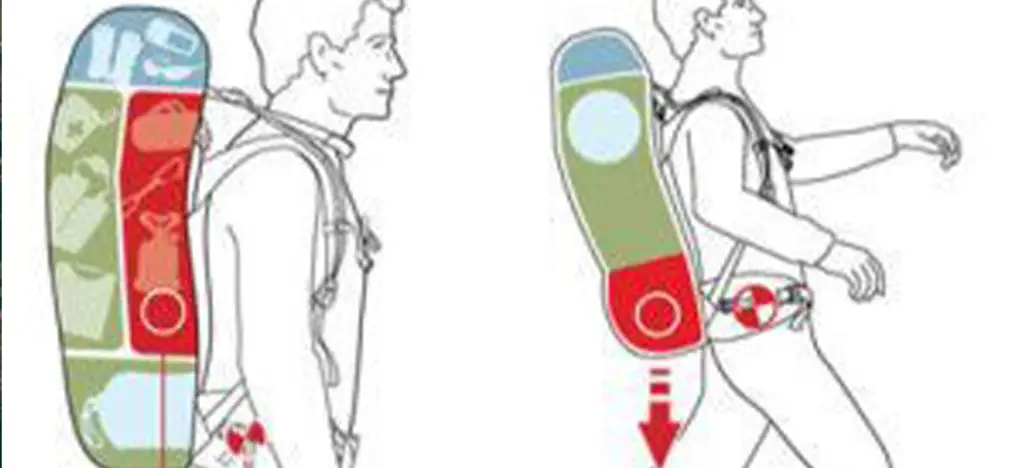
No doubt that the higher mountains form a whole new planet. We should not forget that this planet has its own rules. One should follow these principles to survive in this world. Learning these techniques is really a tedious task, the only option is to practice, practice, practice. Follow these rules of the mountain world and it will shower everlasting love on you.
Do you remember the slow and steady tortoise winning the race? Well, slow and steady in the mountains...will definitely win the mountains!
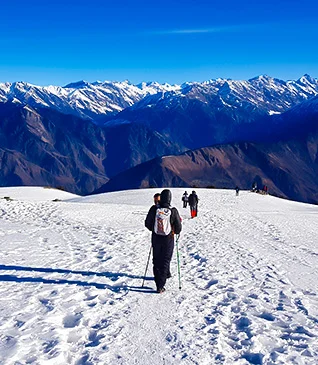
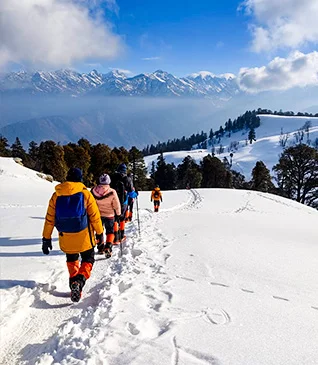
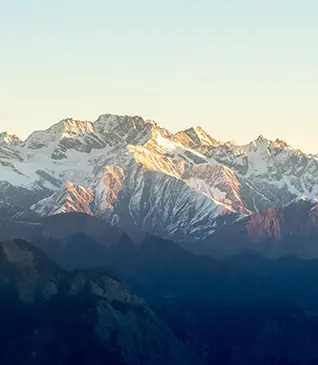
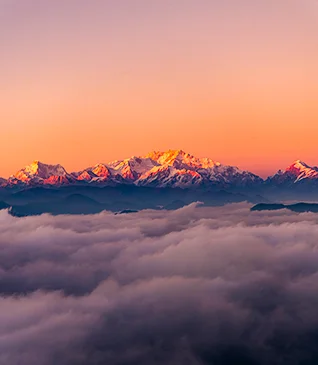
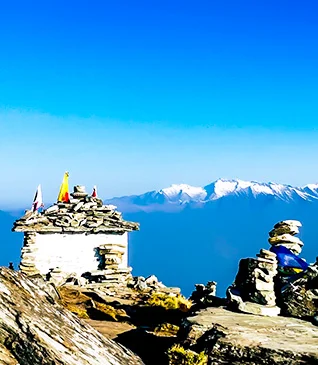
.webp)
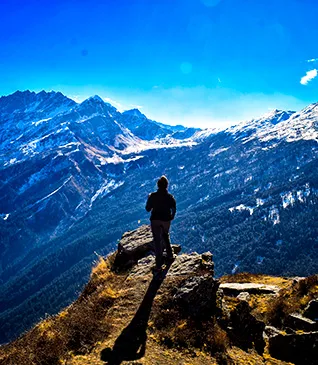
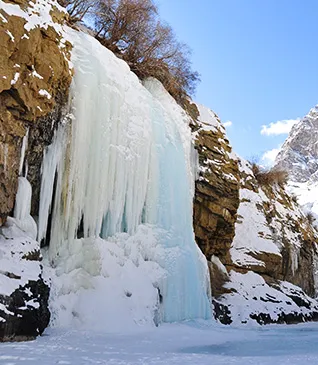
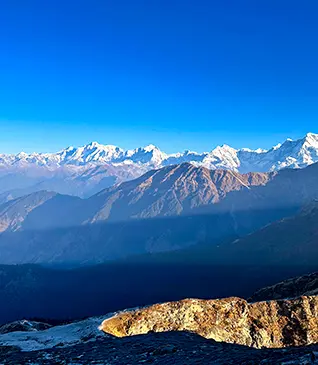
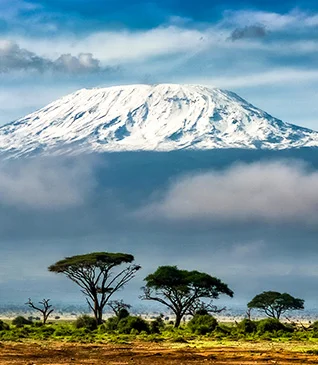
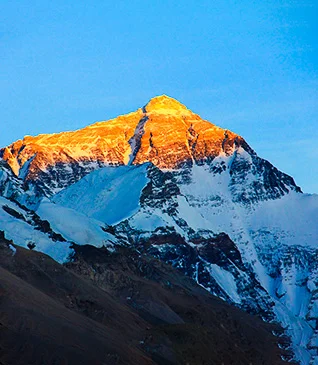
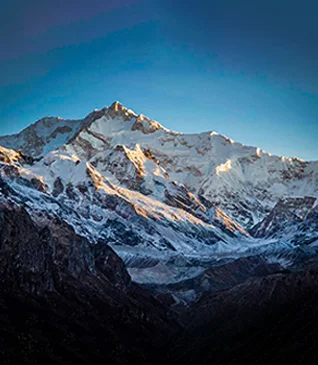
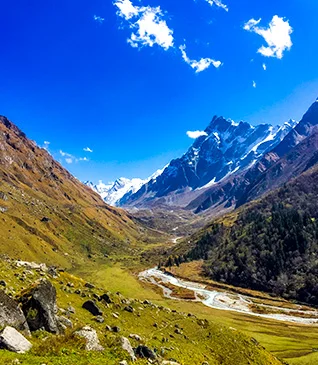

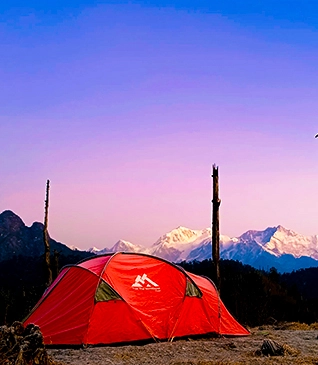
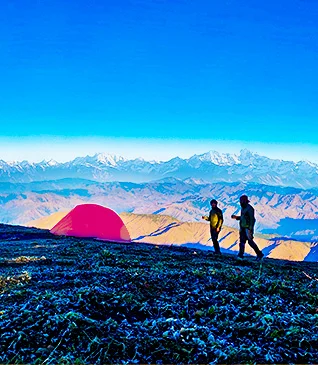
.webp)
